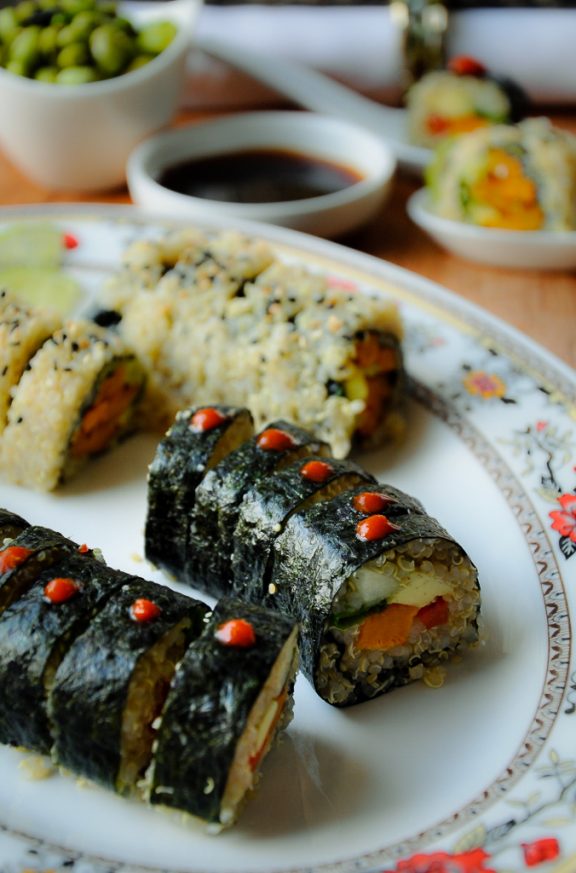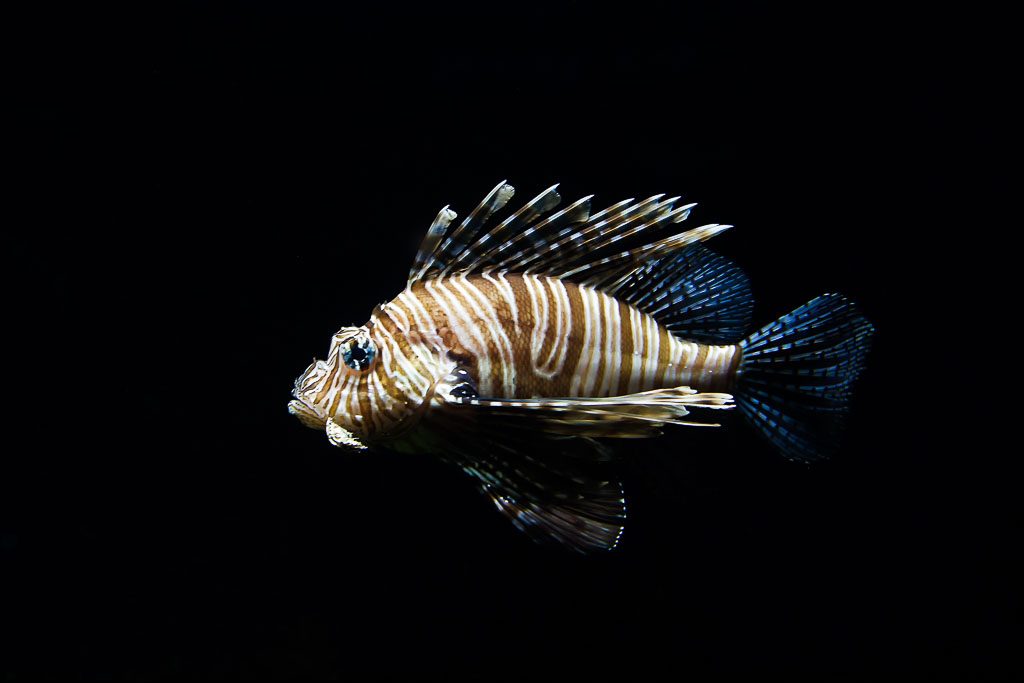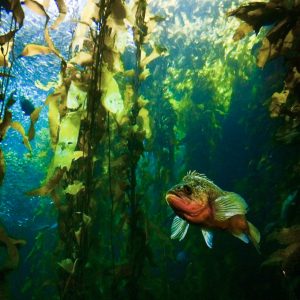On today’s episode, I’m tackling N is for Nori and Nutrient Pollution.
Listen here or download on iTunes or Google Play.
In the first half of the program, I dish all things Nori—what it is, what it tastes like, and where you can buy it.
Then I dive into all things seaweed—varieties of, use, and then explore the potential of this super plant. Is it the new kale? *One can hope
In the second half of the show, N is for Nutrient Pollution, I reflect on the days when I was a teenager and lived in Pittsburgh, the city of three rivers the color of mud.
The I define nutrient pollution and share examples of past and present environmental catastrophes that are a result of nutrient pollution.
Learn what is being done to help slow and change this synthetic and naturally occurring process. Lastly, find out what you can do to help the future of our planet.
N is for Nori
Nori is a Japanese term for dried red seaweed. Technically, the word means alga. You may be familiar with nori if you eat sushi. It’s the green paper-thin sheets used primarily for wrapping sushi.
Nori is the most common edible seaweed.
And can be found in most markets these days. Even the Kroger in my rural western KY town sells flavored nori snacks.
Recently, I bought wasabi-flavored nori sheets. The package is 5 milligrams. One serving. 30 calories, 2 gms fat. 70 milligrams sodium, one carb, and 20 percent Vit A and 15 Percent Vit C based on a 2,000 calorie diet. Okay, that‘s good. Organically grown. No preservatives. The ingredients list is what you’d expect from a natural product—it’s short—organic seaweed, organic sunflower oil, organic wasabi flavored powder (in parenthesis, organic dextrose, natural flavor), and sea salt. So okay, there’s dextrose. But that’s more common than not in packaged foods. The packet also carries the USDA organic and non-GMO labels. So I’m down with all that.
Seaweed is a good source of protein and is high in vitamins, fiber, minerals, iodine, and omega-3s.
What’s not to like?
So, I’m going to open the packet and give it a try. Hang in there.
They’re good. Salty, spicy, and, as you would expect, a seawater flavor with a take-your-breath-away kind of sensation.
Mmm. I like it.
You can buy nori on Amazon. A quick search reveals that you can buy deluxe sushi-nori, raw, organic, roasted, and toasted nori.
So I mentioned that nori is the most common seaweed, but it certainly isn’t the only edible seaweed.
You can buy wakame, hijiki, sea lettuce, kombu, sea spaghetti, and more. And availability is strong. You can buy seaweed online and fresh in some Asian markets.
But the cool thing about seaweed? It isn’t just for eating.
There are over 10K varieties of seaweed with more being discovered daily.
Is seaweed the new kale?
Let’s hope. Right? I mean, I eat kale, but I’m ready for something else.
I think seaweed fits the bill.
There are seaweed farms just like there are fish farms. But because the oceans are changing, the seaweed farms are under attack from ocean pollution and warming water temperatures. But no worries, some terrific innovative solutions are going on right now. You can learn more about that in the Show Notes under NatGeo link below.
The demand for seaweed is not going away. Seaweed has been cultivated for centuries. Initially, there was only wild harvest, but mostly now, seaweed is farmed. Cultivating seaweed brings much of the seaweed to market. Like fish farming, there is land-based, inshore, and offshore farming.
There is a huge demand for seaweeds for many uses.
- Seaweed is processed and converted to carrageenan—a fiber used in food production, personal products, and pharmaceuticals, like dairy products, chocolate, ketchup, mayo, and toothpaste.
- Seaweed can be converted to fuel and made into animal feed and fish feed. It is used in agriculture and wastewater treatment facilities.
- Seaweed in the ocean offers a safe environment, a sanctuary, to a large number of fish and sea creatures. It is also a food source for fish.
Seaweed is a superfood. Or maybe a super plant is a better term. Either way, seaweed is indeed Mother Nature’s gift to the planet.
Now, it’s important to know you can’t eat seaweed like you might eat kale. There are some disadvantages if overconsumed depending on where you get your seaweed. Seaweeds absorb whatever is in the environment, so if the water is polluted with mercury, lead, or other pollutants, then the seaweed will be polluted, too.
So, just like you need to know where your fish comes from, you need to know where your seaweed comes from, too.
Do you eat seaweed? Let me know. Send me an email or follow me on Twitter at @maureencberry.
Alright, my friends, that’s it for N is for Nori. Stick around for the N is for the Nutrient Pollution part of the program. It’s far more exciting than it sounds.
N is for Nutrient Pollution
If you know me, you know I was raised in Pittsburgh, PA., during the 1960s and 1970s. Pittsburgh is one of those cities that has gone through numerous transformations. But one thing sets it apart from other cities. There are three rivers: Mon, Aleg, and Ohio. When I was a kid, these rivers were the color of mud. A smog-filled skyline greeted me as I walked along Grandview Avenue on Mount Washington. Back then, I walked everywhere.
And the sweltering summers didn’t stop me from walking over two miles to Point State Park from my house in Mount Washington. As A kid I don’t remember how long it took. I searched Google Maps—from my front door to the fountain at the park—for about 47 minutes. Back then, I wore flip-flops during the summer like every other kid I knew. But with all that walking, the soles became worn and thin. By the end of the summer, the concrete and asphalt ground burned the bottoms of my feet. so by the time I got to the park where the three rivers met, it didn’t take much for me to want to jump in that water. Laws about swimming in public park fountains were loose back then. Even Mom warned me not to swim in the rivers. I knew it was dangerous. But of course, I didn’t listen. Now, I don’t swim in the river at all. And swimming is probably a loose word. I only remember doing it once.
So why would I jump in the filthy-smelling river?
- Because I could.
- Because I was a teenager and was told not to.
- My feet were on fire.
But trying to Climb back up the oil-slick concrete river bank scared me. Once I was in the water and couldn’t see anything below the surface, I was terrified, even though I was cooled off. When I finally climbed out with help from a friend, I knew I would never jump in the river again.
That oily residue clung to my skin and clothes and matted my curls. Walking home that day, I felt like Linus in the Peanuts cartoon. The top of my head was sunburned.
I suppose I am blessed I didn’t get sick from that incident. But I did. Mom probably made me get a tetanus shot—she was an immunization nurse for the county after all. And maybe another twenty years will change that.
That’s how chemical contamination works. Slowly.
As a teenager, I watched the cityscape change. Steel mills closed bringing hardship to many communities. The rivers flowed. The smog thinned out. Today, Pittsburgh boasts a gorgeous skyline devoid of smog. The rivers aren’t nearly as filthy as in those days of my youth.
It is no wonder that in 1975, I fell so deeply in love when I saw the Atlantic Ocean for the first time.
But way before I experienced nutrient pollution in Pittsburgh in the 60s and 70s, Rachel Carson, the noted marine biologist, conservationist, and author of Silent Spring, had sounded the alarm about the use of chemicals, specifically DDT, and its long-term effects on our natural resources and population. Interesting that Rachel Carson was born in Springdale, PA which is located about eighteen miles northeast of Pittsburgh. I was only three years old when she died an early death from breast cancer in 1964. Nevertheless, her work revolutionized the environmental movement.
Environmental catastrophes continue in our modern-day world.
You don’t have to think too hard about some of them. Flint, MI. The Great Lakes. The Great Garbage Patch. Beaches and waterways around the world are littered with plastic and garbage. Birds and marine mammals eat these plastics. We know because scientists perform autopsies and find plastic in their bellies. Not all birds and animals. Some are more susceptible than others.
In my neck of the woods, these days, I’m hypersensitive to NP. I’m collecting notices from the City Water Department. Three in the last year to be exact. The notices come quarterly.
I’ll read from the latest notice dated July 5, 2017.
TTHM levels are 0.090.
Listen to more about this on the podcast.
So, what exactly is Nutrient Pollution?
According to NOAA, Nutrient pollution, also called eutrophication, yoo-treph-i-kaSHN, is the process where too many nutrients, mainly nitrogen and phosphorus, are added to bodies of water and act like fertilizer, causing excessive growth of algae.
Nutrients come from lawn fertilizer, pet and wildlife waste, and humans. Think about where the chemicals go when you wash your car outside. There are also naturally occurring NP sources from rocks and mountainsides.
Severe NP can cause low oxygen levels in the water, blocking light for seagrass (like the seaweeds mentioned in the N is for Nori part of the program). These surface-water plants and grasses rely on sunlight for growth.
So, how common is NP? And when does it occur?
Np is prevalent on our planet. It occurs in urban and suburban areas, agriculture, forestry, atmospheric inputs, and marinas—everywhere. It also comes from pipes, old ships, factories, sewage, and simple storm runoff.
How is NP controlled?
Well, there are numerous ways to try to stop or slow down the process. For instance.
- Sediment fences on land.
- Planting grass and laying hay around heavy construction sites.
- Retaining fences in the water.
- Retention ponds.
- Constructed wetlands.
- Using porous paving materials to avoid a runoff.
- Crop nutrient management.
- Introducing insects like ladybugs and caterpillars to combat pests reduces the need for pesticides in agriculture.
- Using shut-off valves and pumps in marine areas.
One of the most glaring examples of nutrient pollution comes from the trash that lines beaches and waterways worldwide. Plastic, metals, and drugs leech harmful chemicals into the water.
So what if we choose to do nothing? Or don’t act soon enough?
What are the long-term effects of unregulated NP?
I don’t have the answer, but you don’t need a science degree to see that if left unabated, our planet is in trouble.
So, what can you do?
- Three words. Plant a tree. Do I sound like a broken record?
- No seriously. Plant a tree.
- Celebrate Earth Day.
- Organize or join a water cleanup. I put a link in the show notes so you can find one in your little slice of the world.
Alright, I’ll leave you with that. Check the Show Notes for more information about these two topics. And thanks for listening to GFBO. Don’t forget to subscribe so you don’t miss an episode.
Up next O is for Oysters & Ocean Threats.
If you know someone who would like this podcast, please share. If you have a question or want to continue the conversation, email me at maureencberry at gmail dot com or reach out to me on Facebook and Twitter @maureencberry.
Have a great two weeks!
Thanks for listening to GFBO.
Got a question or comment? Email me or hit me up on Twitter @maureencberry.
If you know someone who would like this podcast, please share!
Show Notes
Reading
- Silent Spring by Rachel Carson
- The Death and Life of The Great Lakes by Dan Egan
Nutrient Pollution
- https://www.cleanwateraction.org/
- http://waterkeeper.org/
- https://oceanservice.noaa.gov/education/tutorial_pollution/016youcando.html
- https://oceanservice.noaa.gov/facts/nutpollution.html
- https://oceanservice.noaa.gov/podcast/supp_jan09.html#eutro
- https://oceanservice.noaa.gov/education/tutorial_pollution/welcome.html
- https://oceanservice.noaa.gov/education/tutorial_pollution/04nonpointsource.html
- https://oceanservice.noaa.gov/education/tutorial_pollution/013bacteria.html
Seaweed
- http://www.fao.org/docrep/006/y4765e/y4765e0c.htm
- http://www.nationalgeographic.com/people-and-culture/food/the-plate/2016/october/from-seaweed-to-fish-feed–new-ways-aquaculture-may-feed-the-fut/
- http://www.berkeleywellness.com/healthy-eating/food/article/6-things-know-about-seaweed
- http://www.segoroalgae.com/
- https://www.nienkehoogvliet.nl/portfolio/seaweed-research/
- http://www.irishseaweedresearch.com/
- http://www.nature.com/nature/journal/v160/n4072/abs/160662a0.html?foxtrotcallback=true
- https://www.nioz.nl/en/expertise/seaweed-research-centre
- https://www.amazon.com/s/ref=nb_sb_noss_1?url=search-alias%3Dgrocery&field-keywords=nori



